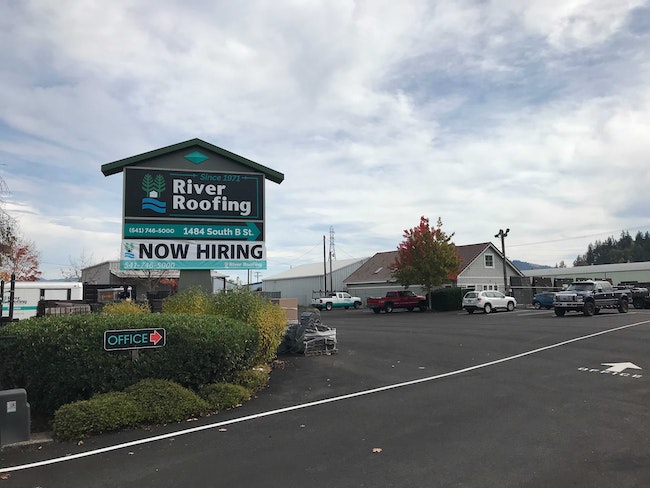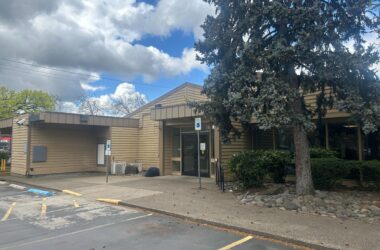 River Roofing is typical of many Oregon establishments, where business remains brisk and the need for more employees remains strong. NOEL NASH/CHRONICLE PHOTO
River Roofing is typical of many Oregon establishments, where business remains brisk and the need for more employees remains strong. NOEL NASH/CHRONICLE PHOTO
State of Business in Oregon: Good, but Labor Problems Persist
Recently, the Springfield Chamber of Commerce held its 2021 State of Business Program, featuring a robust presentation from Josh Lehner, Senior Economist at the State of Oregon Department of Economic Analysis.
The Chronicle participated in this Zoom presentation and came away with what can best be described as the good, the bad, and the ugly of our state’s economy right now and into the foreseeable future.
Spoiler alert: There is actually a lot more good than either bad or ugly.
Let’s explore the program’s findings in reverse order, as I always want to hear the worst news first whenever given the choice.
The ugly is something most of you are already painfully aware of: the ongoing labor shortage. According to Lehner, there are and will continue to be major hurdles to overcome in filling all the jobs that are available. And of course, COVID-19 is at the heart of the problem.
Around 20,000 potential employees are sitting on the sidelines due to concerns related to the Delta variant’s continued spread in the state. Vaccine mandates are also taking a toll. As an example, Todd Salnas, the CEO of PeaceHealth in Eugene, and sponsor of the 2021 State of Business Program, noted that nearly 7% of the healthcare organization’s employees left due to its vaccine mandate. So just when they need employees the most, they are struggling to keep up.
Making matters worse for the employment picture is the fact that impacts from the virus almost exclusively hit employment in the service sector of the economy. Products were still manufactured, sold, and purchased, but services like restaurants, hotels, and airlines flatlined. This trend disproportionately affects the more urban areas of Oregon, which support a higher portion of service jobs, and is borne out by the fact that Multnomah County unemployment is far higher per capita than a more rural area, such as Malheur County.
The (sort of) bad news is that there are systemic issues that we all need to address in order to fix the labor problem. I say it’s sort of bad news only because a good deal of work needs to be done to correct the problem, and it’s incumbent on all parties – employees, employers, and government – to agree on the steps.
Lehner points out four key solutions that we must address to unclog the labor faucet.
The first is that wages must be raised to not only attract workers to jobs, but to incent them to leave unemployment benefits that have been subsidized by (critically important) government programs, and reenter the workplace while the pandemic still persists.
Next, businesses must spend more effort to reduce turnover. Right now, almost 40% of the workforce turns over every year. This creates way too much uncertainty for employers and the economy in general. Creating a real career path for workers is one big step every employer must take.
Third, we must increase productivity via technology and automation. COVID-19 has shown us that some jobs are simply not going to come back, and therefore business is going to have to innovate so that employers and employees are not burned out by having to do so much more with fewer people.
Finally, employers must cast a wider net to find and recruit employees. Unemployment among BIPOC populations lags every other group, and older workers are also having a tough time finding work. If employers spend more time and resources finding workers among these groups, the labor shortage could be significantly improved.
The good news is pretty significant. Lehner says that Oregon could see a 6% growth rate in the coming year, which is larger than any year since 1984. Personal income in Oregon is already 10% higher today than it was prior to the pandemic. The federal Paycheck Protection Program injected $19 billion into the Oregon economy and kept many businesses afloat. In turn this helped people keep jobs and kept them spending on key products like groceries and home improvement, while still increasing personal savings rates. In fact, the difference between what consumers saved versus what they spent during the past 18 months is huge.
And now that money, burning holes in wallets, is ready to be injected back into the economy as restrictions are eased. People are more than ready to spend on dining, travel, and other services that were so restrained last year.
Lehner was fairly bullish on the short-term economy and predicted that by summer, our state and local economy could be back to pre-pandemic levels.
He did, however, finish the presentation with a few words of caution. The global supply chain issues, which are still creating huge price increases and a shortage of goods, are going to be with us for a while longer. Further, inflation is running a bit higher than the 2% target set by the Federal Reserve. Some economists believe that short-term inflation could go even higher and force the Fed to raise interest rates. In the past, such conditions have led to national recessions.
Yet overall, the economy is doing remarkably well considering we’ve all been living with a generational crisis in the form of the pandemic. Indeed, we’ve all experienced a little bit of the good, the bad, and the ugly in almost every facet of our lives. Hopefully, in the near future, the good pushes the bad and the ugly further into the rearview mirror.







